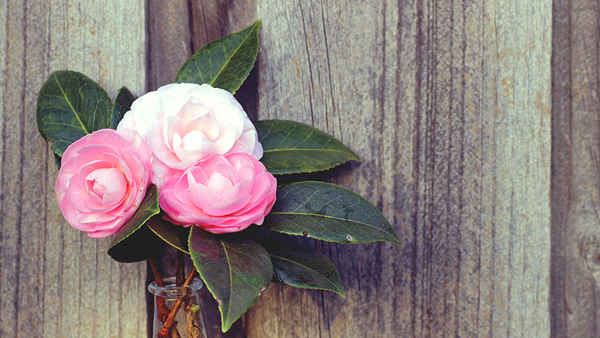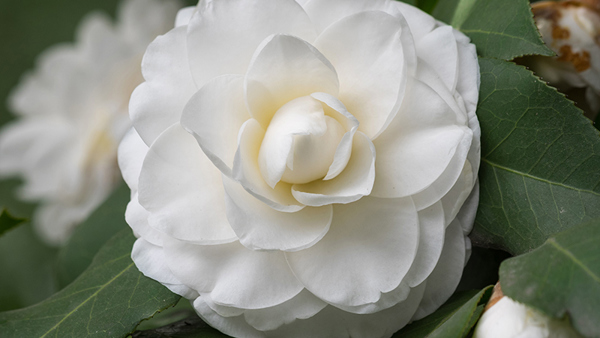Yates Account
Join now
Create a Yates account today!
Sign up to join the Yates Garden Club for monthly e-mails packed with seasonal inspiration, tips for success & exclusive promotions.
Plus if you’re a Garden Club member you can take part in the Yates Growing Community - a blog to share successes, get advice & win prizes in fun challenges along the way!

Forgot password
Enter the email address associated with your account, and we'll email you a new password.

How to grow Camellias in a garden
Camellia's come in a range of single to double blooms as well as a variety of colours, ranging from deep pinks and reds through to pretty light pink, cream and white. Camellias with exposed stamens are adored by bees and camellia flowers can also attract birds.
- Choose a position with well drained soil.
- Aspect: sasanqua camellias prefer full sun to part shade with protection from hot afternoon sun, whereas japonica camellias do best in a mostly morning sun aspect. Check the label to see which aspect the chosen variety is best suited for.
- Enrich the soil with Yates Thrive Natural Blood & Bone with Seaweed. If the soil is clay based, add gypsum and fork in well.
- Dig the planting hole twice as wide and to the same depth as the root-ball. Remove the plant from the container and gently tease the roots.
- Position in hole and backfill, gently firming down. Form a raised ring around the plant, creating a well so that water will go where it’s needed most. Water in well.
- Mulch with an organic mulch like woodchip or pea straw, keeping it away from the base of the plant.
- Water deeply, once or twice a week, depending on weather conditions.
- During the growing and flowering season feed with Yates Thrive Camellia, Gardenia & Blueberry Granular Plant Food. TIP: for an added boost apply Yates Thrive Roses & Flowers Liquid Plant Food.


How to grow Camellias in a pot
- Choose a pot at least 300mm wide. Dwarf varieties such as the 'Petite' range will happily grow in pots this size, however, other varieties may require potting up to a larger sized pot as they grow.
- Aspect: sasanqua camellias prefer full sun to part shade with protection from hot afternoon sun, whereas japonica camellias do best in a mostly morning sun aspect. Check the label to see which aspect the chosen variety is best suited for.
- Fill pot with quality potting mix, such as Yates Premium Potting Mix.
- Remove the plant from the container and gently tease the roots.
- Position in hole and backfill, gently firming down.
- Water in well.
- Water deeply, once or twice a week, depending on weather conditions.
- During the growing and flowering season, apply Yates Thrive Roses & Flowers Liquid Plant Food. Throughout the year apply Yates Thrive Fish Blood & Bone Plant Food Concentrate.
Growing Tips
- Camellias are remarkably drought tolerant, but plants perform best if water stress is kept to a minimum.
- Watch out for sunburn. Even the sun-hardiest camellia can burn on an extra-hot day, which can lead to leaf fungal problems. To avoid this, plant in the ideal aspect.
- Camellias make their major spurt of growth after flowering, so it’s important to feed when the last flowers are coming to an end.
- Camellias have shallow root systems that can dry out readily during summer so, after fertilising, spread a layer of mulch around the base to retain moisture.
- Camellias prefer an acidic soil between 6.0 and 6.5. Using a pH test kit, check the soil pH prior to planting.
- If the soil pH is greater than 6.5, to lower the pH (acidify) apply Yates Soil Acidifier Liquid Sulfur. - The three most common types of Camellias are:
Japonica Camellia (C. japonica)
This Camellia can grow up to 4 to 5 metres in height and has deep green larger leaves that produce an array of flowers (double, single) in late autumn to early spring.
Sasanqua Camellia (C. sasanqua)
Widely used as a hedging plant but can grow and form into a small tree from 2-8 metres in height. Single or double flowers are produced from mid summer to mid-winter.
Tea Plant (C.sinesis)
Grown for the leaf tips rather than the flower form. Small shrub that can grow to around 2 metres in height. Small white flowers appear in autumn to spring. New leaves and buds are harvested to use as tea (white, green and black).
















Share
Share this article on social media